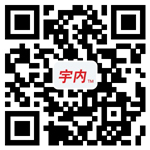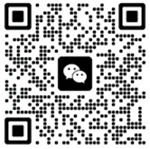Mob:0086-519-85861103
Fax:0086-519-85863396Mail:info@xyzdz.com;
Add:
Taiping West Road, Baizhang, Chunjiang Town, Xinbei District (Forging)
Jianxin Road, Qiangtang Industrial Park, Chunjiang Town, Xinbei District(Crankshaft)
Current location:Home > News > Company news
We have previously introduced the basic structure of a car's heart engine. However, if a car is to be driven on a road, the wheel must first be rotated. How do you transfer the power of the engine to the wheel and turn the wheel? The device responsible for transmitting power to make the car play is the transmission system. If the car is not used, it will become a generator or a seated man, and it will be a machine that burns money.
In the basic transmission system, the device responsible for the power connection, the shifting mechanism that changes the force, the differential that overcomes the difference in the rotational speed between the wheels, and the drive shaft that connects the various mechanisms are included. After these four main devices, It is able to transfer the power of the engine to the wheels.
The vehicle drive train can be divided into mechanical transmission, hydraulic transmission, hydraulic transmission, electric transmission, etc. according to different energy transmission modes. According to the structure and transmission medium, the automotive transmission system is of mechanical type, hydraulic mechanical type, hydrostatic type (volumetric hydraulic type), electric type and the like.
First, the power connection device
1. Clutch: This group of mechanisms is placed between the engine and the manual transmission and is responsible for transmitting the power of the engine to the manual transmission.
Clutch step-by-step manipulation animation
Clutch step-by-step manipulation animation
When the gasoline engine vehicle is running, the engine needs to continue to run. However, in order to meet the needs of the car, the vehicle must have functions such as stopping and shifting. Therefore, it is necessary to add a group of mechanisms to the outside of the engine to interrupt the transmission of power as needed to keep the engine running. Underneath, the need to make the vehicle stationary or shifting gears. This group of institutions is the power connection device. Generally, the power connecting devices that can be seen on the vehicle include a clutch and a torque converter.
The clutch mechanism is placed between the engine and the manual transmission and is responsible for transmitting the power of the engine to the manual transmission. As shown, the flywheel mechanism is fixed to the output shaft of the engine. In the outer casing of the flywheel, a disc-shaped spring is connected to the pressure plate, and a friction disc is connected to the input shaft of the transmission.
When the clutch pedal is released, the pressure plate in the flywheel uses the force of the spring to firmly press the friction plate, so that there is no sliding phenomenon between the two to achieve the purpose of connection, and the engine power can pass through this mechanism. , passed to the gearbox to complete the work of power transmission.
Diaphragm clutch installation animation
When the pedal is depressed, the mechanism pressurizes the spring so that the periphery of the spring is lifted and the press is separated from the friction plate. At this time, the friction plate and the flywheel cannot be interlocked. Even if the engine continues to run, the power will not be transmitted to the gearbox and the wheel. At this time, the driver can perform shifting and parking, etc., without causing the engine to stall. .
2. Torque Converter: This set of mechanisms is placed between the engine and the automatic transmission to deliver the smooth power of the engine to the automatic transmission. A set of clutches is included in the torque converter to increase transmission efficiency.
Turning, in addition to the assistance of the steering system, must also be adjusted on the drive train. The reason is that when the vehicle is cornering, the inner wheel takes a shorter path and the outer wheel takes a longer path. After passing such a path in the same time, the wheels on the left and right sides are bound to face different speeds. If there is no special mechanism to deal with, it will cause the vehicle to turn around when turning; even if it is turned hard, it will have serious problems of wheel wear. At this point, the differential is introduced into the drive train of the car.
As can be seen from the figure, the differential is made up of a number of gear sets. When going straight, the left and right wheels rotate at the same speed, and the inner gear set does not work, as if the left and right wheels are running on the same axle. When the vehicle enters a curve, the difference in the rotational speed of the left and right wheels is absorbed by the rotation of the intermediate gear set, so that it can smoothly pass.
Fourth, the drive shaft
The power output by the engine is transmitted to the drive wheels after being converted by the shifting system to generate a driving force to the vehicle. The mechanism responsible for transmitting power to the drive wheels is the drive shaft. According to different transmission system configurations, it can also be divided into two types: drive shaft and axle.
transmission shaft
Can go and can stop - the car transmission system explains in detail
In front-engine rear-wheel drive (FR) or front-engine four-wheel drive models, since the rear wheels are required to be driven, the power must be transmitted to the rear axle differential to transmit power to rear wheel. This is only the long connecting rod below the entire body, which is the drive shaft. In the front-engine front-wheel drive (FF), rear-engine rear-wheel drive (RR), and mid-engine rear-wheel drive (MR), the three transmissions do not have a drive shaft. After the power output of the gearbox and the differential, the axle is directly connected.
axle
The power is transmitted from the differential to the axle of the wheel. The axle is also known as the "half axle" or "drive shaft." In the general front-wheel drive vehicle, the transmission system is arranged as shown in the figure. The engine, transmission and differential are connected together. After directly connecting the axles, the power is transmitted directly to the left and right wheels to drive the vehicle body. . The basic structure of the automotive transmission system is described above. We know how the power of the engine is transmitted to the wheels. In fact, the transmission system and engine configuration, there are many forms, mainly two-wheel drive and four-wheel drive, each drive has its own characteristics, but also meet the needs of different driving conditions.
Drive system and engine configuration
After having the basic drivetrain components, the automotive engineer will design the drivetrain to a two-wheel drive (2WD) or four-wheel drive (4WD) depending on the vehicle's intended use.
◆ Two-wheel drive
Only the front or rear wheels of the car can receive power, causing the wheels to rotate and move the vehicle forward or backward.
This drive mode has four specific forms: front engine front wheel drive (FF), front engine rear wheel drive (FR), center engine rear wheel drive (MR), and rear engine rear wheel drive (RR).
◆ Four-wheel drive
That is, the four wheels of the vehicle can receive power, causing the wheels to rotate and move the vehicle forward or backward.
A power distribution device called a "transfer box" is added to the rear of the gearbox to transmit power to the front and rear axles according to the set ratio, so that the four wheels of the car are powered.
Among the four-wheel drive (4WD) vehicles currently on the market, the engine installation positions are front, center and rear.
The transmission system includes three important components: the gearbox, the differential and the drive shaft. The mission of the transmission system is to transfer the power of the engine to the wheels. Because of the different ways in which the engine of the car is placed on the body, the combination of the engine and the transmission system can take many forms. Most combinations are related to the use or performance requirements of the car. Common combinations include front engine front wheel drive (FF), front engine rear wheel drive (FR), and mid engine rear wheel drive (MR).
Driveline and engine configuration - front engine front wheel drive
This is the most widely used drive for modern cars. Both the engine and the drive train are installed in the engine compartment of the front. This arrangement allows the front wheels to be responsible for the drive and no longer has to be responsible for the steering. Since the front wheel simultaneously bears the work of transmission and steering, the control of the vehicle during steering is made simple, so the front engine front-wheel drive (FF) vehicle is safer than other methods when driving.
Since the engine and transmission system of the front engine front wheel drive (FF) are installed in the engine compartment of the front, the main weight of the car is concentrated on the front of the vehicle. This situation requires the front wheel to bear more weight, and then the rear wheel must bear more weight. The weight of the wheel is much less, and the front wheel is about to bear about 62% of the weight of the car.
Driveline and engine configuration - front engine rear wheel drive
This is the most traditional arrangement of the car. The engine and part of the transmission are installed in the engine compartment of the front, and the power is transmitted to the rear wheel by the drive shaft.
Since the differential and axle in the transmission system are both mounted on the rear axle of the vehicle, plus the engine is placed longitudinally inside the engine compartment, so that the center of gravity of the engine falls behind the front axle, and the larger the engine The center of gravity will fall behind the position, and the front and rear axles of the vehicle will thus achieve a good weight ratio. The rear axle of a typical model has to bear about 47% of the weight of the car, so the rear-wheel drive vehicle drive wheels get a higher downforce, allowing the vehicle to travel on steep slopes or in continuous corners for better handling.
Since the center of gravity of the engine falls behind the front axle, the front engine rear wheel drive (FR) vehicle can be considered a mid-engine rear wheel drive (MR) vehicle with the engine placed in the front. Therefore, in recent years, some high-performance front-engine rear-wheel drive (FR) vehicles have been advertised as front-middle-engine rear-wheel drive (F-MR) vehicles after deploying larger engines.
Drive system and engine configuration - front engine four-wheel drive

